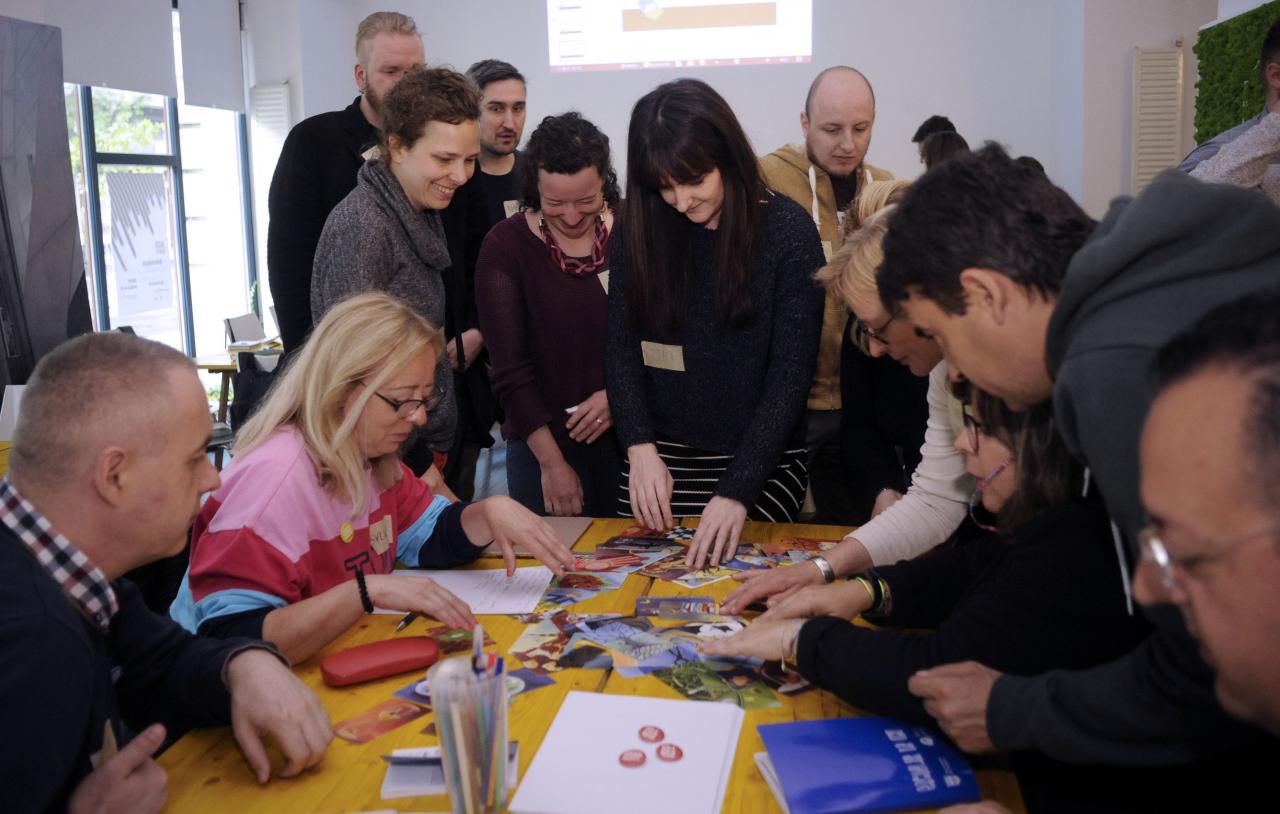
Organising a community-led festival along the main principles of the good practise “Budapest100” is the task for Come in! partner cities. Organising the festival whilst applying co-creation techniques with both volunteers and residents and thus sharing ownership is the goal. The challenge for partner cities is how to accelerate the community impact generated by the good practice in other policy fields.
Residents open the doors of their houses and organise programs for visitors reflecting on their own built heritage. Visitors get to know the history of the house and the architects by reading installations or listening to stories prepared by residents, supported by a massive number of passionate urbanist volunteers as researchers and programme organisers. Whilst listening to the local stories and reading the history of the house, participants, including the neighbours, start to talk to each other. And that’s the point! Visitors explore their own city through a new perspective, while residents explore their connections to their house and to each other. This does more than build reserves of important knowledge, it also builds communities. And the real question beyond the Come in! network is how to harvest the community impact within urban policies?
The Budapest100 community festival was started in 2011 by the Open Society Archives and the Contemporary Architecture Centre in Budapest, celebrating houses turning 100-years old that year during a thematic weekend. The event quickly became a yearly, rather successful city festival, always celebrating buildings that were 100 years old in the given year. Since 2015 the celebration of 100-year-old buildings is not possible anymore due to WWI, so each year the focus is on different themes. In 2019 – in line with the international centenary - the theme was Bauhaus.
For this unique reason Come in! partners came to Budapest to explore the good practice in operation. Besides discussing the good practice with the main organisers, the colleagues of the Hungarian Contemporary Architecture Centre, the Lead Partner, district 11 of Budapest, the lead expert and with each other of course, they walked along Budapest with other ca. 10 000 visitors, entered some of the 59 participating houses, talked with some of the local residents and ca. 180 volunteers as organisers, checked the locally made installations, listened to music also organised by residents, and enjoyed the best of the 323 bottom-up programs organised in courtyards and on staircases.
This article sums up the main observations made by the partner cities during a Photo Safari session, in the mirror of the local implementation of the good practice. But this piece of work also intends to highlight the fact that mobilising citizens is key to many urban policies. Thus Budapest100 and a similar community-led city festival reflecting on ‘our heritage’ and strengthening the sense of belonging seems an efficient urban acupuncture, and thus it has the potential to boost other urban policies efficiently. So what kinds of benefits do participating cities get? It turns out from the next article.
Check out our video about a Masterclass weekend here.
Ferenc Szigeti-Böröcz

